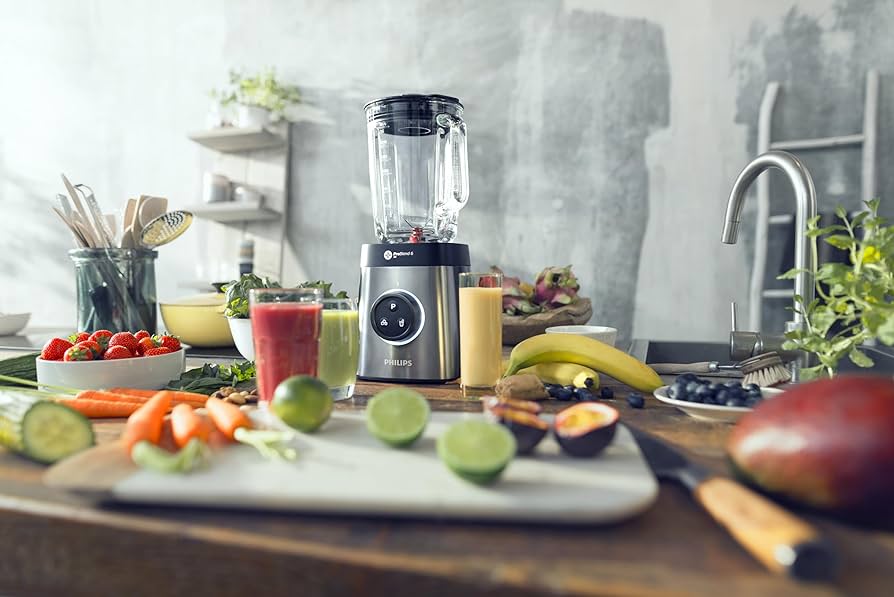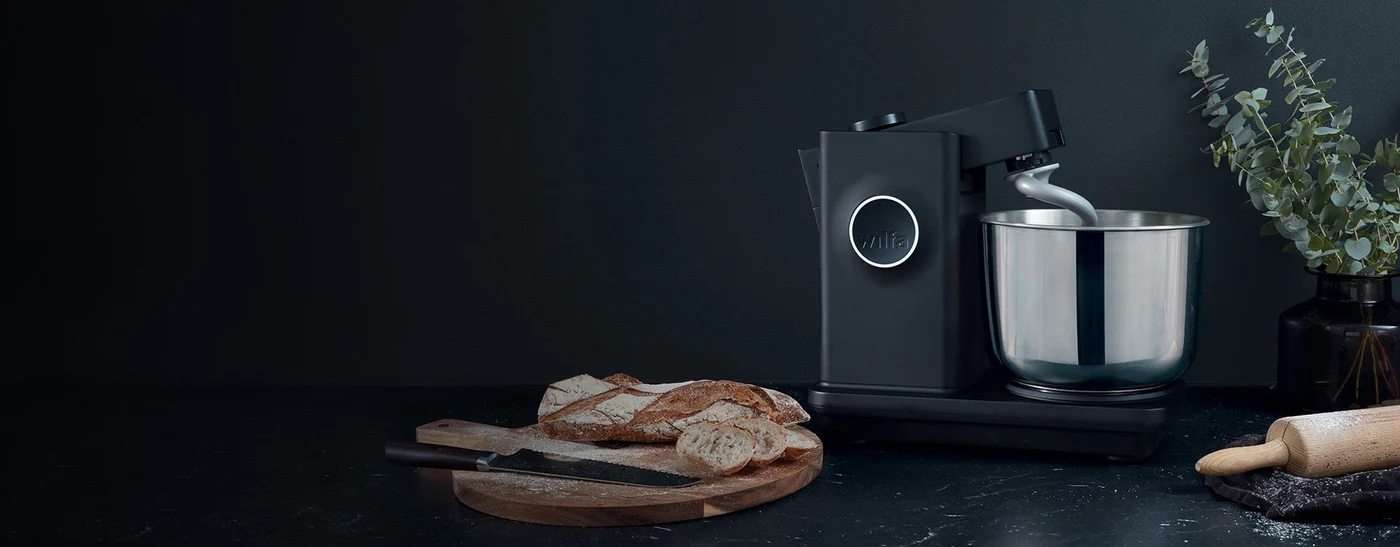Welcome to the only Stand Mixer Buying Guide you’ll ever need. If you’re standing on the edge, wondering if this iconic kitchen appliance is worth the counter space, let me tell you—it absolutely is. I remember my first stand mixer. It felt like graduating. Suddenly, my lumpy cookie dough became silky, my sad bread transformed into lofty loaves, and my arms were finally free from endless whipping. It wasn’t just a machine; it was a partner in crime for all my culinary adventures. But choosing the right one can feel like navigating a maze. Are you a tilt-head or a bowl-lift person? Does wattage even matter? Don’t worry, we’re about to clear all of that up. Let’s find the perfect stand mixer for your kitchen.
Why You Need a Stand Mixer (More Than Just a Pretty Face)
Before diving into the technical specs, let’s talk about the why. A stand mixer isn’t just for professional bakers. It’s a game-changer for anyone who enjoys spending time in the kitchen.
- Hands-Free Heaven: Imagine creaming butter and sugar to fluffy perfection while you measure out your flour. Or kneading a tough bread dough for 10 minutes without breaking a sweat. This multitasking power is the number one reason people fall in love with their stand mixer.
- Power and Efficiency: These machines are built with powerful motors designed to handle tasks that would exhaust a hand mixer (or your arm). They can tackle everything from thick, sticky sourdough to airy, delicate meringue with consistent results.
- Superior Results: The unique planetary mixing action, where the beater spins on its axis while also orbiting the bowl, ensures that every last bit of ingredient is incorporated. This means no more scraping the bowl every 30 seconds. The result? Better texture, better volume, and more consistent bakes.
- Versatility Unleashed: With a universe of attachments available, a stand mixer is more than a mixer. It can become a pasta maker, a meat grinder, a spiralizer, or even an ice cream machine. It’s the true workhorse of the modern kitchen.
Types of Stand Mixers: Tilt-Head vs. Bowl-Lift
This is the first major decision you’ll make. It’s like choosing between a sedan and an SUV; both get you where you need to go, but they’re designed for different needs.
Tilt-Head Models
This is the classic design you probably picture in your head, famously used by brands like KitchenAid in their Artisan series. The motor head is on a hinge and tilts back, allowing you to easily access the bowl and beater.
- Pros:
- Easy to add ingredients.
- Simple to attach and remove the bowl and beaters.
- Generally smaller and lighter, making them a better fit for standard kitchen cabinets.
- Cons:
- The hinge can be a point of weakness on very heavy-duty tasks.
- Slightly less stable when mixing dense doughs at high speeds.
- Typically have smaller bowl capacities (around 4.5 to 5 quarts).
Bowl-Lift Models
Favored in commercial kitchens and by serious home bakers, this design features a stationary head. You place the bowl on two arms and use a lever to crank it up into the mixing position.
- Pros:
- Incredibly stable and robust, perfect for heavy, frequent use.
- Larger bowl capacities are common (6 to 8 quarts), ideal for big batches.
- Often equipped with more powerful motors.
- Cons:
- Can be more cumbersome to add ingredients or scrape the bowl.
- Heavier and taller, so you’ll need to measure your counter-to-cabinet space.
- Generally more expensive.

Pro Tip: If you mainly bake cookies, cakes, and the occasional loaf of bread for your family, a tilt-head model is likely your perfect match. If you’re a bread fanatic, make double batches weekly, or dream of starting a side hustle, the power and capacity of a bowl-lift are worth the investment.
What Should I Look for in a Stand Mixer? The Core Features
Once you’ve picked a style, it’s time to get into the nitty-gritty. This is where this stand mixer buying guide becomes your best friend.
Power and Motor Type (Wattage Isn’t Everything)
This is the biggest misconception out there. A higher wattage does not automatically mean a better mixer. It’s like judging a car’s performance by how loud its engine is. What truly matters is torque—the rotational force that keeps the beater moving through thick dough.
- AC (Alternating Current) Motors: These are common in many tilt-head models. They can be powerful but are often less efficient and can heat up under strain. Wattage ratings are usually higher (e.g., 325 watts).
- DC (Direct Current) Motors: Often found in premium and bowl-lift models. DC motors are quieter, more energy-efficient, and deliver more consistent torque, even at lower speeds. They can have a lower wattage rating (e.g., 275 watts) but outperform a higher-wattage AC motor.
Don’t get hung up on the number. Instead, look at reviews from trusted sources like CNET or Wirecutter that specifically test a mixer’s performance with tough bread dough.
Bowl Size and Material
How much do you typically bake?
- 4.5 – 5 Quart: The sweet spot for most homes. This size can handle a batch of up to 9 dozen cookies or 2 loaves of bread.
- 6 – 8 Quart: For the serious baker. If you’re regularly doubling recipes, making large sourdough boules, or baking for events, go big.
As for material, stainless steel is the industry standard. It’s durable, non-reactive, and easy to clean. Some models offer glass or ceramic bowls, which are beautiful but heavier and more fragile.
The Magic of Planetary Mixing Action
Nearly all modern stand mixers have this, but it’s crucial to understand why it’s so important. The beater and the drive shaft spin in opposite directions, creating an orbital path that covers the entire bowl. Think of the Earth spinning on its axis while it revolves around the sun. This ensures no dry pockets of flour are left at the bottom, giving you a perfectly homogenous mix every time.
Unlocking Your Mixer’s Potential: Standard Attachments
Your stand mixer will come with three essential tools. Knowing what each one does is key to getting the most out of your machine.
- Flat Beater (or Paddle): This is your all-purpose tool. It’s for any mixture with a “creaming” or “beating” instruction. Think cookie dough, cake batter, mashed potatoes, and even pulling pork.
- Dough Hook: This C-shaped or spiral hook mimics the motion of hand-kneading. It’s essential for developing gluten in bread, pizza, and pasta dough. It turns a 15-minute arm workout into a hands-free task.
- Wire Whisk (or Whip): Designed to incorporate air. Use it for whipping egg whites into stiff peaks for meringue, making fluffy whipped cream, or creating light frostings and emulsions like mayonnaise. Never use it for thick batters or doughs—you’ll bend the wires.
Maintaining Your Kitchen Workhorse: Cleaning and Care
A good stand mixer is an investment that can last for decades with proper care. Keeping it in top shape is surprisingly simple.
- Always Unplug First: Safety first! Before cleaning or changing attachments, make sure the machine is unplugged.
- Wipe Down the Body: Use a damp cloth to wipe down the mixer body and head after each use. Never submerge the main unit in water.
- Wash Attachments and Bowl: Most stainless steel bowls and coated attachments (flat beater, dough hook) are dishwasher-safe on the top rack. However, wire whisks often have an aluminum base and should always be hand-washed to prevent oxidation.
- Check Beater-to-Bowl Clearance: Over time, your mixer might need a slight adjustment. If the beater is hitting the bottom of the bowl or sitting too high, you can adjust it.
As pastry chef John Ackerman often says, “Treat your mixer like a member of your team. A quick wipe-down after a job well done ensures it’s ready to perform for the next bake.” A little care goes a long way.
Quick Comparison: Tilt-Head vs. Bowl-Lift
| Feature | Tilt-Head Models | Bowl-Lift Models |
|---|---|---|
| Power | Good to excellent | Excellent to commercial-grade |
| Capacity | 4.5 – 5.5 quarts | 6 – 8 quarts |
| Best For | Everyday baking, smaller kitchens | Large batches, avid bread makers |
| Key Pro | Easy access to bowl | Unmatched stability and power |
| Key Con | Less stable with heavy dough | Taller and heavier |
Frequently Asked Questions (FAQ)
Q: How much should I spend on a stand mixer?
A: A quality stand mixer is an investment. Expect to spend between $300 and $500 for a reliable, long-lasting model from a reputable brand like KitchenAid or Kenwood. High-end models can exceed $700, but these are typically for semi-professional use.
Q: Can a stand mixer knead all types of dough?
A: Yes, that’s one of its primary strengths. From soft brioche to dense, whole-wheat sourdough, the dough hook attachment is designed to develop gluten efficiently. Just be sure not to over-knead and follow your recipe’s speed recommendations.
Q: What’s the difference between a stand mixer and a hand mixer?
A: A stand mixer is a stationary, hands-free appliance with a powerful motor and planetary mixing action for superior results. A hand mixer is a portable, less powerful tool best suited for lighter tasks like whipping cream or mixing thin batters.
Q: Is a more expensive stand mixer always better?
A: Not necessarily. “Better” depends on your needs. A more expensive model typically offers a more powerful motor (often DC), larger capacity, and more robust construction. But if you’re a casual baker, a mid-range tilt-head model is more than sufficient.
Q: How long should a good stand mixer last?
A: With proper care, a well-built stand mixer can easily last 15-20 years or even longer. They are one of the most durable kitchen appliances you can own, and many brands offer excellent repair services and replacement parts.
Conclusion: Your Partner in the Kitchen
Choosing a stand mixer is about more than just specs; it’s about choosing a reliable partner for your culinary journey. It’s the tool that will help you perfect your grandmother’s cookie recipe, tackle that ambitious sourdough starter, and whip up a birthday cake that looks as good as it tastes. It saves you time, saves your arms, and delivers professional-quality results right in your own home. We hope this stand mixer buying guide has empowered you with the knowledge to make a confident choice. Now go on, find the one that speaks to you, and get ready to elevate your baking game forever.
Have you made your choice? Share your stand mixer stories or ask us anything in the comments below! We love hearing from you.